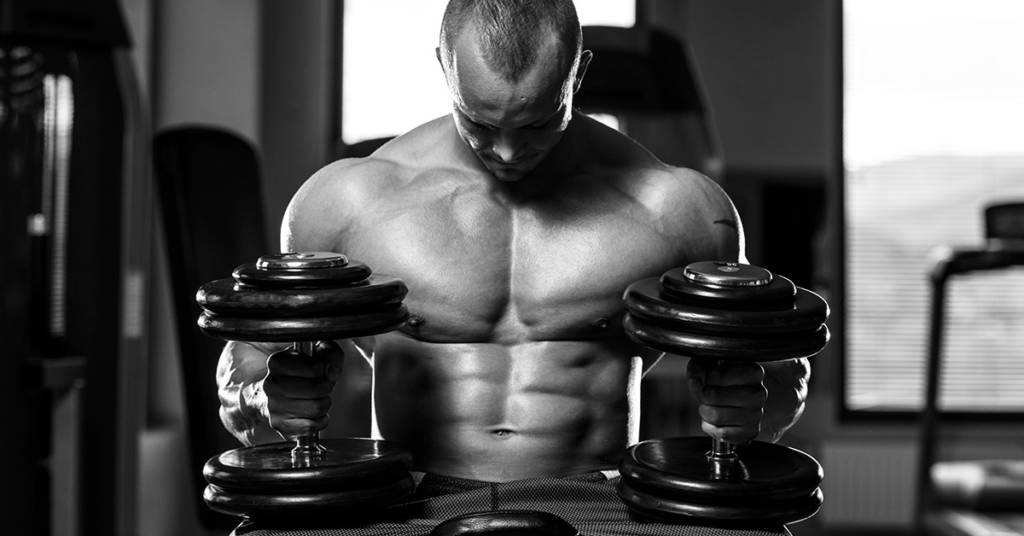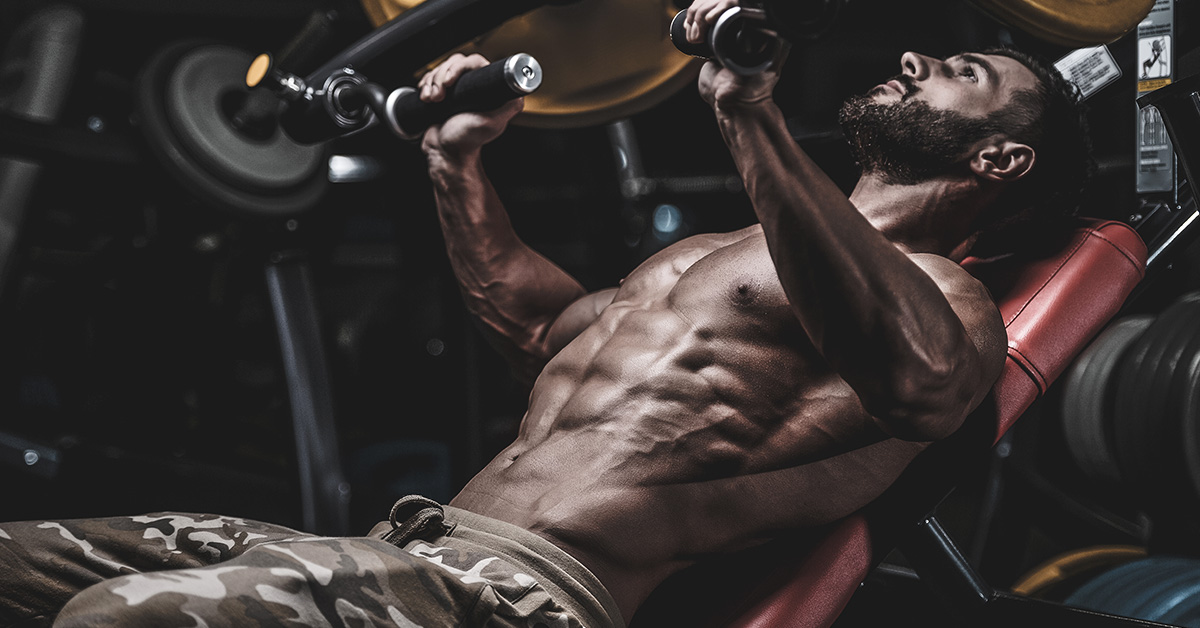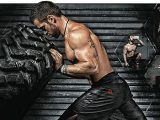HOW DO YOU CHOOSE THE BEST EXERCISES FOR MUSCLE GROWTH?
June 5, 2021Every day you try to get the most out of your training. You train a muscle from different angles, you make sure that you train with sufficient volume and to close it you go to failure or beyond to literally draw the last bit of energy from every muscle fiber. But how often do you actually think about the exercises you are doing exactly? Are you doing this because you happened to see this with your training partner, your favorite athlete or someone on social media? Or because you have actually discovered that these are the best exercises for your goal? For the majority, it’s probably the former, so today we’re going to show you how to do an informed search for the best exercises for muscle growth!
THE 4 BUILDING BLOCKS
In order to determine which exercises are best for hypertrophy (muscle growth), it is first important to know what the main driver of that hypertrophy is. Without going too deeply into this topic, mechanical tension seems to primarily cause your muscles to grow, followed by metabolic stress and muscle damage.
Mechanical tension simply boils down to creating an overload by putting a heavy load on the muscle and often sitting relatively close to failure for maximum muscle activation. This forces neurological and physical adjustments to your body so that the next time you are able to move the weight more easily or even lift a little more weight. And yes, this mechanical tension also activates the mTor signaling mechanism and protein synthesis, among other things, so that you build more muscle mass. In practice, metabolic stress is characterized by high repetitions and more training on the pump, while training for muscle damage means failing or going beyond that with the help of a spotter or eccentric training.
OKAY, BACK TO MECHANICAL STRESS, BECAUSE THAT SEEMS TO BE THE MAIN DRIVER OF MUSCLE GROWTH.
Knowing that a heavy overload is crucial to build more strength and muscle mass in the long run, we can draw up a number of building blocks that an exercise must meet. These 4 building blocks are as follows:
- Specificity
- Progressive overload
- Resistance profile
- Injury sensitivity
You want to choose exercises that score as well as possible on these 4 building blocks. Do 3 building blocks score very well, but one of them less? Then the exercise is probably fine to use. However, if there are 2 or more of these building blocks that are scoring less than optimal, it is probably a very good idea to review your exercise selection!
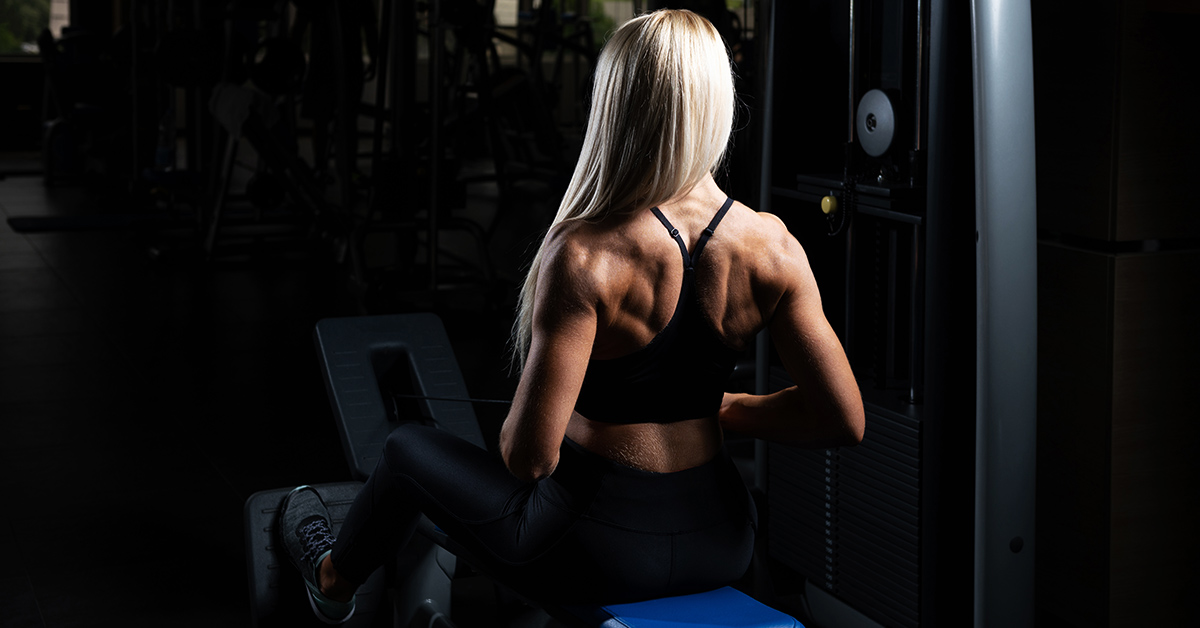
SPECIFICITY OF THE EXERCISE
The single most important building block to start with is the specificity of an exercise. We simply want to say that an exercise should primarily train the muscle group you want to train. It may sound so logical, but this is a point where people often get it wrong.
Take squats for example. The squat is a great all-round exercise , but in the end it remains primarily an exercise for your quadriceps (the front of your thighs) and buttocks, depending on how deep you sink. Secondarily, your hamstrings, lower back and even calves are trained, but these muscle groups are not primarily loaded during the squat. So do you want to put extra emphasis on your hamstrings? Then even more squatting will not help you, because the quadriceps will always remain the weak link here, not your hamstrings.
SO ALWAYS CHECK WHICH MUSCLE GROUP IS CAUSING YOU TO FAIL DURING AN EXERCISE
Is this actually the muscle group that you want to train at that moment? And if not, which muscle group is that?
If you notice that you have to stop every time during the incline bench press because your shoulders or triceps are tired instead of your chest, that is an important sign that something is not right. You may need to revise your technique or come to the conclusion that an incline bench press is not the best exercise for you to stimulate the chest.
An important part of the specificity of an exercise is Range Of Motion . This is the path of movement that you can do with the muscle you want to train. Take the leg press, for example, an exercise in which you can move a lot of weight. That alone is of course good for your ego and the fact that you are lying on a bench makes the leg press more comfortable than a squat. But do you get the most out of your leg training with the leg press? Probably not, so that usually makes deep squats with proper technique a better choice when it comes to developing your quads.
WHAT TO REMEMBER ABOUT SPECIFICITY
Make sure that you have clear which muscle group you want to train with each exercise you do and check whether this actually happens. If another muscle group fails before the muscle you want to train, you are not getting the most out of your training.
PROGRESSIVE OVERLOAD
The next building block is progressive overload. It has already become clear at the beginning of this article that mechanical tension is all about putting a heavy load on a muscle, so that means that exercises that allow you to add a little more weight over time are almost always better than exercises that cannot do this. .
Progressive overload simply means that you can increase the resistance in a good way. This is a very important part of your exercise selection, as it clearly shows why dumbbell fly’s alone are not going to give you the chest you dream of. Dumbbell fly’s might specifically train your chest, but how realistic is it to keep adding weight to your fly’s for years on end?
In addition to the fact that an exercise must be specifically chosen to train a certain muscle group, it is also important that you can make measurable progress with this exercise. The steps in which this happens is not important, as long as it is possible. Keep this in mind: if you can add a 1.25kg slice per side to your bench press every 2 weeks, it will only take you 8 weeks to press 10kg more than now! So don’t let small steps deter you, see it as a means to achieve big results in the long run.
Simply put, this point means that compound compound exercises are often better choices than isolation exercises that mainly fulfill a supportive role.
STABILITY
Another important part of progressive overload is the degree of stability you have. It is not without reason that exercises with a barbell are often preferred over dumbbells or cables when it comes to mass. A good example is a split squat. Looking purely at the movement, it is a great exercise for your quads. Practice, on the other hand, often works out differently, because how well can you keep the focus on your quads if you are looking for stability with 2 dumbbells of 40 kg in your hands?
So once stability becomes the limiting factor in your progression, you need to ask yourself if it is the right exercise for you. Also remember that the individual differences are enormous in this area. Your training partner may be able to effortlessly maintain his balance with heavy dumbbell presses, while you already notice that you are going in all directions with moderately intensive weights. So be honest with yourself and check if you have enough stability to do exercises such as dumbbell presses, split squats or military presses at maximum intensity. If the answer is ‘yes’, fine, then go for it! Is the answer ‘no’? Then rather choose another exercise as the basis.
Does the principle of progressive overload then mean that isolation exercises have little or no value? Definitely not, as isolation exercises are a good way to specifically load a specific muscle group and build up less fatigue. But keep in mind that isolation exercises should not be the foundation of your workout unless you have a very good reason for it, such as an injury.
THINGS TO REMEMBER ABOUT PROGRESSIVE OVERLOAD
The best exercises allow you to progress in weight for long periods of time and are not limited by stability. Someone who presses sets of 120 kg will most likely have a larger chest than someone who presses sets of 80, so never underestimate the importance of heavy, compound exercises.
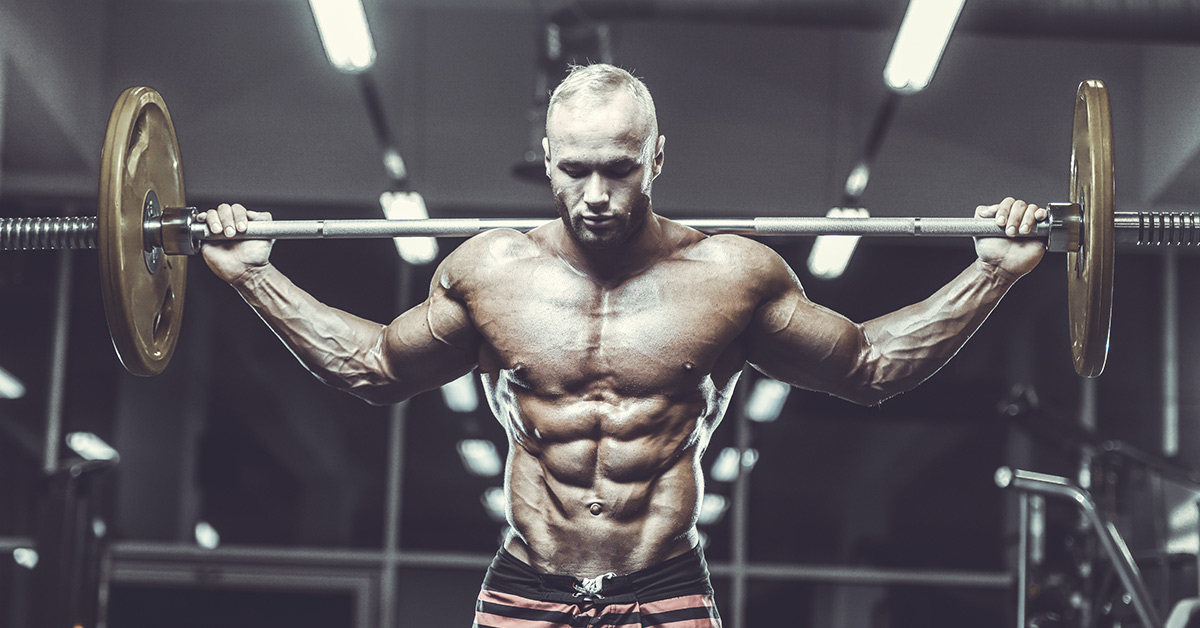
RESISTANCE PROFILE
The next building block is the resistance profile of an exercise. Especially with dumbbells and barbells, this is a point that you should pay close attention to, because here you are always fighting gravity.
You have probably noticed that you are relatively stronger at certain points in a movement than at other points. Think of the lockout in bench press compared to the point at the bottom, or the squat where the stretch at the bottom is many times heavier than the last stretch at the top. This is okay and because we cannot influence gravity there is little that can be done about this, but what we can do is choose the right exercises and adjust the situation as well as possible to your own strengths and weaknesses.
USE A VARIABLE RESISTOR
For some, the bottom part of the bench press is still relatively easy, but you may find that you literally always get stuck at the bottom of the movement. In such a case, it can be helpful to train with bands or chains . With this you manipulate the resistance profile of an exercise so that it is more in line with your personal strength production. This allows you to make maximum effort in every part of the movement, without one part of the movement ruining your entire exercise.
Some will say this is cheating and it is just part of the game. But think of it this way: do you train to develop your muscle mass? Or are you training to compete in powerlift competitions? In the latter case, you cannot avoid making the lower part of the movement enormously strong. But are you someone who trains recreationally, purely for yourself, to build muscle mass? Then it is of great value to tailor the exercises you do to your body as much as possible.
CABLES TO THE RESCUE
Other exercises that often involve a poor relationship between the resistance of an exercise and your personal strength are isolation exercises for your biceps, triceps and side shoulders. Where the first part is often very light and you can easily shift the weight, the exercise becomes more difficult as you get to the end of the movement.
In such cases it is a good idea to work more with cables or machines. This straightens out the resistance of the exercise and allows you to put the focus where it should be. This not only provides a better training stimulus, but also prevents you from getting a back injury if you swing your dumbbell curls in all directions to get the weight up.
WHAT TO REMEMBER ABOUT THE RESISTANCE PROFILE
The best exercises have a resistance profile that closely matches your personal strength. This means that you don’t have one point in the movement where you always fail, but you can get the most out of it at every point in the movement.
INJURY SENSITIVITY OF AN EXERCISE
The last, not unimportant, building block is the injury sensitivity of an exercise. It will not seem illogical that an exercise with which you want to train at maximum intensity and progressively increase weight should also be safe for you. Think of the load on your joints, your tendons and your attachment points.
It’s simple, but certain exercises place your body in such an unnatural position that the risk of injury quickly increases. Especially exercises that are performed from the neck are known for this, such as behind the neck pulldowns and shoulder presses. But also a popular exercise like triceps dips are guilty of this. You put yourself in a position that pushes you behind your body. For some, this will go well for a lifetime, while others will notice at the first time that something is not right.
If you want to participate in this sport for more than a year, it is therefore wise to only choose exercises that meet the first 3 building blocks and also feel good on top of that. By that we want to say that there should be no unnecessary pressure on tissues other than your muscles, such as joints and tendons.
Do you find that a particular exercise is causing you aches or injuries over and over again? Then something is wrong in your technique or you simply have to accept that this exercise is not for you. For example, the bench press may be another great exercise, if your shoulder joint or rotator cuff is still getting the most of it, it won’t be an effective mass builder for your chest in the long run.
WHAT TO REMEMBER ABOUT INJURY SUSCEPTIBILITY
Every exercise you do should be pain free, except for the muscle you want to train. Is this not the case? Then there is a good chance that you are working yourself towards an injury, resulting in a much longer period that you cannot train optimally or perhaps even permanent damage.

